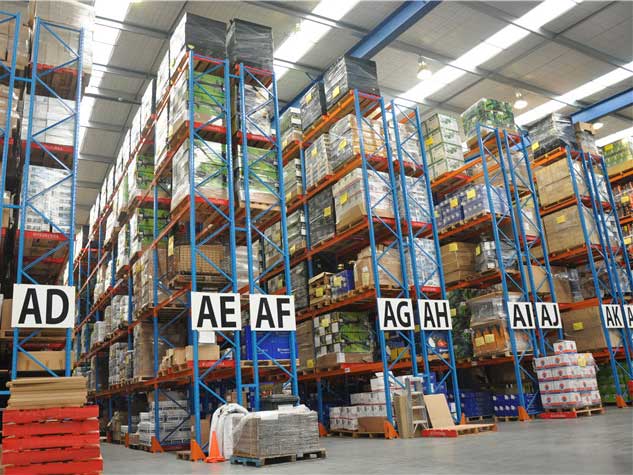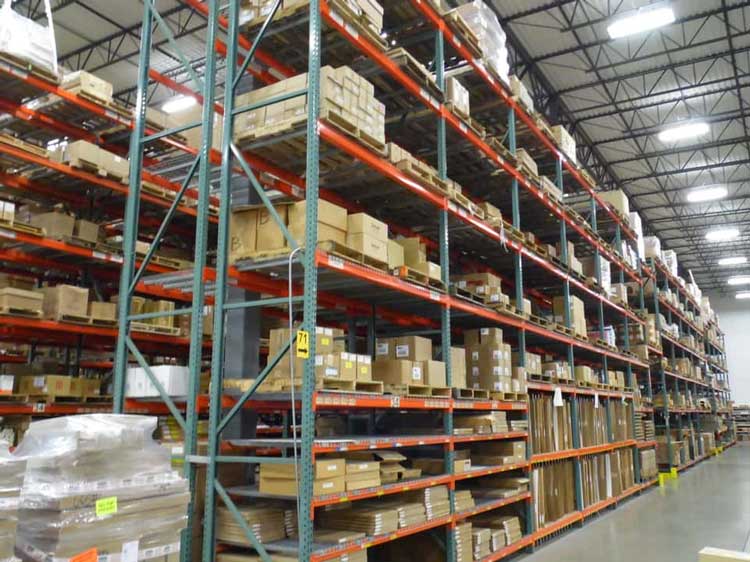 spieth10@spiethstorage.com
spieth10@spiethstorage.com +8615259233328
+8615259233328
LATEST NEWS
-
Time:4/29/2024
-
Time:4/19/2024
-
Time:4/1/2024
-
Time:3/29/2024
CONTACT US
-
 Tel : +8615259233328
Tel : +8615259233328
-
 E-mail : spieth10@spiethstorage.com
E-mail : spieth10@spiethstorage.com
-
 Address : Tongan Park, Tongan District, Xiamen, China 361023
Address : Tongan Park, Tongan District, Xiamen, China 361023
Industry News
What is the Features of Drive-In Rack?
 Time:2/11/2020
Time:2/11/2020 1016
1016Share:
Drive-in racks are extensively used for storing large quantities and small varieties of goods. With drive-in racks, the storage capacity can be maximized because the shelves are merged together without aisle, which can improve the utility ratio of the warehouse areas.
2. Goods enter and leave the warehouse from the same side of the shelf, FILO, LIFO, counterweight and forward moving forklift can easily drive into the middle of the shelf to enter and exit the cargo without occupying multiple aisles.
3. This kind of shelf is suitable for storing a large number of items with few varieties. The arm of the penetrating rack (press-in rack) adopts the overall stamping / rolling technology, which has a strong carrying capacity and an attractive appearance.
4. Drive in rack full plug-in assembly structure, the pillars are assembled structure, the total depth of the shelf area next to the wall is generally best controlled within 5 pallet depths, the total depth of the shelf that can be accessed on both sides in the middle area is generally best Within 10 pallet depths to improve forklift access efficiency and reliability.
5. Compared with other types of racks, such as longspan shelving, pallet racking, and push back rack, the drive in rack system is relatively unstable. Therefore, the racks should not be too high, generally within 10m. This type of system has densely arranged shelves and extremely high space utilization rate, and is suitable for storing a small variety of large quantities of the same type of goods.
Now, let's have a look on the features of SPIETH drive-in rack:
2. Goods enter and leave the warehouse from the same side of the shelf, FILO, LIFO, counterweight and forward moving forklift can easily drive into the middle of the shelf to enter and exit the cargo without occupying multiple aisles.
3. This kind of shelf is suitable for storing a large number of items with few varieties. The arm of the penetrating rack (press-in rack) adopts the overall stamping / rolling technology, which has a strong carrying capacity and an attractive appearance.
4. Drive in rack full plug-in assembly structure, the pillars are assembled structure, the total depth of the shelf area next to the wall is generally best controlled within 5 pallet depths, the total depth of the shelf that can be accessed on both sides in the middle area is generally best Within 10 pallet depths to improve forklift access efficiency and reliability.
5. Compared with other types of racks, such as longspan shelving, pallet racking, and push back rack, the drive in rack system is relatively unstable. Therefore, the racks should not be too high, generally within 10m. This type of system has densely arranged shelves and extremely high space utilization rate, and is suitable for storing a small variety of large quantities of the same type of goods.
ONLINE SERVICE
-

-
 +8615259233328
+8615259233328
 0
0
Browsing History


















 Link:
Link:




